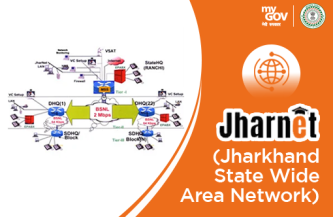The four ‘C’s behind the Union Budget

Four Cs—continuity, correctness, conservatism and crowding-in—are the hallmarks of the Union budget for 2022-23 presented by India’s finance minister on 1 February.
The budget has continued with the practice started two years ago of bringing all below-the-line items above the line. Extra-budgetary resources, in which the borrowing is guaranteed and serviced by the Union government, is restricted to a single transitional item of ₹750 crore in the current fiscal year’s revised estimates (RE). Transparency and cleaner accounting continue to be accorded the highest priority in budget-making as was the case with the previous two budgets.
In the last two years, marked by the global pandemic, the government has provided resources for vulnerable sections of the society through emergency credit-line schemes, emergency food support (PM Garib Kalyan Yojana) involving the allocation of additional food grain over and above eligibility under the public distribution system (extended multiple times) and enhanced allocations to the rural employment guarantee programme and PM-Kisan.
In the 2022-23 budget, it has extended the Emergency Credit Line Guarantee Scheme to contact-based sectors that are yet to return to their pre-pandemic levels. The revamping of the Credit Guarantee Trust for Micro and Small Enterprises (MSMEs) and infusion of additional capital into it will unlock an extra ₹2.0 trillion of credit to MSMEs.
The government has used the pandemic crisis as an opportunity to usher in many important structural changes in the economy. Examples include the production-linked incentive (PLI) schemes for 14 sectors, ending of the uncertainty associated with retrospective taxation, privatization, faceless tax assessment and a reduction in corporate and personal income taxes, wherein taxpayers could opt for lower tax rates with fewer or no exemptions or to file under the old method. In addition, important process-oriented measures, such as the launch of the Gati Shakti dashboard, reforms in government procurement, changes to factoring laws and the account aggregator framework, have been launched.
The budget for 2022-23 builds on this approach of combining structural reforms and process improvements. The many initiatives under Gati Shakti, the inter-linking of many portals (Udyam, e-Shram, NCS and ASEEM) to help MSMEs with credit facilities, skilling and augmentation, the enabling of post offices with the core-banking solution, the facilitation of updated returns to correct errors in the original returns for up to two years, and creating a pathway for world-class foreign universities and institutions in selected fields to be set up in GIFT city are but a few examples.
The assumption of 11.2% as the growth rate of gross domestic product (GDP) at current prices might strike many as being too conservative, especially given that the Economic Survey for 2021-22 projects a figure of between 8 and 8.5% as the growth rate for GDP at constant prices. If anything, the chances of this projection being exceeded are higher than the chances of undershooting it, given that real GDP contracted quarter-on-quarter in the first quarter of 2021-22. That sets up a positive base effect for 2022-23. However, depending on the impact of the Omicron variant, economic activity could be weaker in the last quarter of the current fiscal year. If multiple external shocks impact the Indian economy in 2022-23 (an oil-price shock, the US Fed’s monetary policy normalization impacting global financing conditions, etc), then 11.2% might not appear so conservative, but prudent.
Capital expenditure by the government will rise 36% over the revised budget estimate (and 35.4% over BE 2021-22), after one excludes the cash infusion of nearly ₹52,000 crore in Air India. It includes ₹1 trillion of 50-year interest-free loans to state governments to undertake capital infusion. It includes incremental (over last year’s ₹65,000 crore) budget support of ₹69,000 crore to the National Highways Authority of India (NHAI). All this information is in the public domain.
If state governments were allowed this ₹1 trillion as an additional borrowing limit, they would bear an interest rate higher than the rate at which the Union government borrows. Further, it may be applied for revenue expenditure. This interest-free loan, dedicated as it is to capital expenditure, incentivizes it. The fact that states’ capex up to November 2021 was 67% higher than in the same eight months of the previous financial year supports this 50-year interest-free loan purely for capital expenditure purposes.
The NHAI’s capital investments in recent years have been considerably financed by borrowings, which has increased its interest burden. By providing enhanced budgetary support, the government is strengthening the NHAI to help it remain a financially- viable entity while ensuring continued investment in national highways.
Once confidence crowds out the pandemic-induced concerns that are currently clouding the minds of citizens, then the various measures announced and capital investments envisaged in the Union budget will succeed in crowding in private investments.
These are the author’s personal views.
[The Blog was first published in Livemint and is written by V. Anantha Nageswaran, Chief Economic Advisor to the Government of India.]





